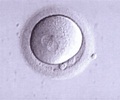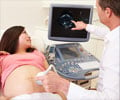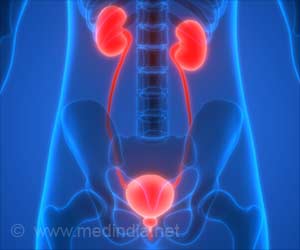An analysis of previous studies suggests that for patients with a suspected blood clot in a deep vein of a leg, withholding anticoagulation therapy after a negative whole-leg compression
An analysis of previous studies suggests that for patients with a suspected blood clot in a deep vein of a leg, withholding anticoagulation therapy after a negative whole-leg compression ultrasound is associated with a low risk of developing a blood clot during the subsequent 3 months, suggesting that multiple ultrasounds may not be necessary for some low-risk patients, according to an article in the February 3 issue of JAMA.
Compression ultrasound (CUS) is the primary testing procedure used to diagnose proximal deep vein thrombosis (DVT; a blood clot in a deep vein in the thigh or leg), as the method confirms and excludes DVT of the proximal veins (above the knee) but its accuracy for distal vein DVT (below the knee) has been questioned. Up to 25 percent of distal DVTs may move into proximal veins, increasing the risk of pulmonary embolism (blood clot in the veins moving into the lung). "Consequently, practice guidelines recommend serial CUS of the proximal veins 5 to 7 days after an initial negative result to safely exclude clinically suspected DVT. Because only 1 percent to 2 percent of repeat CUS tests detect thrombus propagation, many repeat studies are conducted to detect a small number of DVTs," the authors write.Whole-leg CUS may exclude proximal and distal DVT in a single evaluation and lessen the need for repeat CUS tests, however concerns exist regarding the safety of using a single whole-leg CUS to exclude DVT following an initially negative result, according to background information in the article.
Stacy A. Johnson, M.D., of the University of Utah School of Medicine, Salt Lake City, and colleagues conducted a review and meta-analysis of previous studies to examine the risk of venous thromboembolism (blood clots in the deep veins of the legs or in the lungs) in patients with suspected lower-extremity DVT following a single negative whole-leg CUS result for whom anticoagulation was withheld. The authors identified seven studies for the analysis, which included 4,731 patients.
An analysis of data indicated that venous thromboembolism or suspected venous thromboembolism–related death occurred in 34 patients (0.7 percent), including 11 patients with distal DVT (32.4 percent), 7 patients with proximal DVT (20.6 percent), 7 patients with nonfatal pulmonary emboli (20.6 percent), and 9 patients (26.5 percent) who died, which may have been related to venous thromboembolism. Use of a model indicated that the combined venous thromboembolism event rate at 3 months was 0.57 percent.
"In summary, withholding anticoagulation following a single negative whole-leg CUS result was associated with a low risk for venous thromboembolism during 3-month follow-up in patients with suspected DVT. Using a single negative whole-leg CUS result as the sole diagnostic modality in patients with high pretest probability of DVT requires further study," the authors conclude.
(JAMA. 2010;303[5]:438-445. Available pre-embargo to the media at www.jamamedia.org)
Advertisement
Editorial: Evidence-Based Medicine Requires Appropriate Clinical Context
Advertisement
"… based on the meta-analysis by Johnson et al, clinicians may infer that not initiating anticoagulation treatment after a negative CUS result in some surgical or ambulatory patients at low risk of having VTE may be appropriate; however, that inference may not be true for hospitalized patients or those with cancer. Greater detail about individual patient scenarios is necessary to facilitate better application of the study results to individual patients. One helpful approach may be for reports of meta-analyses to include, in detail, the inclusion and exclusion criteria for patients enrolled in the original studies."
"However, summary statements from meta-analyses should not be used to guide patient care. Such conclusions are not helpful when the clinical studies are combined and averaged in a way that reduces the complex world of medical care to overly simple and consequently not clinically useful statistical summaries. … meta-analysis may have a useful role in synthesizing available evidence, especially, for example, in identifying signals of potential harm that may not be readily apparent in individual studies. However, meta-analyses are most appropriately used to formulate, but not test hypotheses."
Source-Eurekalert
RAS















